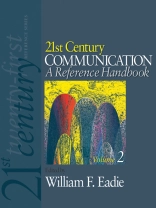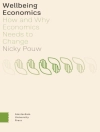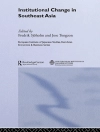The discipline of communication has grown in popularity from the time professors of journalism and speech decided, in the mid-1960s, that the term ‘communication’ was an excellent general descriptor for the theory and research that each group aspired to create. Over time, the two groups grew closer and recognized significant overlap in their theoretical and research interests, but there were also differences in their traditions that kept them apart. While both groups agreed that communication is a practical discipline, journalism professors focused a great deal of their attention on the education of media professionals. Speech professors, on the other hand, often were more oriented to the liberal arts and valued the fact that communication could be approached from a variety of traditions, including the arts, humanities, social sciences, and even the sciences.
A key term in 21st Century communication, however, is
convergence. Not only are media and technology converging with each other to produce new means of communicating, but individuals are increasingly using both new and existing communication tools to create new forms of communication. This convergence forces the various ‘camps’ within the communication discipline to draw upon each other′s theories and research methods to keep up with explaining the rapidly changing communication environment. This convergence of ideas and theories provides a space to challenge conventional ways of thinking about the communication discipline, and that′s the goal of the SAGE 21st Century Reference Series volumes on Communication. General Editor William F. Eadie has sought to honor the diversity of the study of communication but also integrate that diversity into a coherent form, dividing communication study into four basic properties: 1)
processes, 2)
forms and types of communication, 3)
characteristics to consider in creating messages, and 4)
relationships between communicators.
Via 100 chapters, this 2-volume set (available in both print and electronic formats) highlights the most important topics, issues, questions, and debates any student obtaining a degree in the field of communication ought to have mastered for effectiveness in the 21st Century. The purpose is to provide undergraduate majors with an authoritative reference source that will serve their research needs going forward in this exciting field with more detailed information than encyclopedia entries but not as much jargon, detail or density as a journal article or a research handbook chapter.
- Comprehensive coverage captures all the major themes and subfields within communication. For instance, Volume 1 themes include the discipline of communication, approaches to the study of communication, key processes of communication, forms and types of communication, key characteristics of messages, key communication relationships, factors affecting communication, and challenges and opportunities for communication. Themes in Volume 2 are media as communication, communication as a profession, journalism, public relations, advertising, and media management.
- Authoritative content is provided by a stellar casts of authors who bring diverse approaches, diverse styles, and different points of view.
- Curricular-driven emphasis provides students with initial footholds on topics of interest in researching for term papers, in preparing for GREs, in consulting to determine directions to take in pursuing a senior thesis, graduate degree, career, etc.
- Uniform chapter structures make it easy for students to locate key information, with a more-or-less common chapter format of Introduction, Theory, Methods, Applications, Comparisons, Future Directions, Summary, Bibliography & Suggestions for Further Reading, and Cross References.
- Availability in print and electronic formats provides students with convenient, easy access.
เกี่ยวกับผู้แต่ง
William F. Eadie (Ph.D., Purdue) is Director of the School of Communication at San Diego State University, where he is responsible for leadership of a large program of 2, 300 student majors and 125 faculty encompassing all aspects of communication, media, and journalism. Prior to joining SDSU in 2001, he was Associate Director of the National Communication Association (NCA) in Washington, DC, where he worked with researchers and promoted communication research to a variety of audiences. His other faculty appointments have been at Ohio University and California State University, Northridge, and he has served as an adjunct of visiting faculty at the University of Minnesota, University of Maryland, UCLA, and California State University, Los Angeles. He served as the first editor of the Journal of Applied Communication Research after it became an NCA publication and also has served as President of the Western States Communication Association. His scholarship focuses on how interpersonal rhetoric impacts on the development of relationships, and he has been an advocate for the application of communication research in ways that affect the lives of ordinary people. He has received the NCA Golden Aniversary Award for outstanding journal article and has been elected a member of the national honorary societies Phi Kappa Phi, Golden Key, and Phi Beta Delta. With Paul Nelson, he co-edited two books for SAGE: The Language of Conflict and Resolution (2000) and The Changing Conversation in America: Lectures from the Smithsonian (2001).












